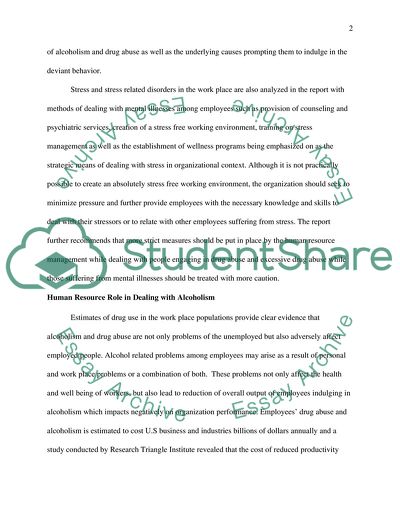Cite this document
(Human Resource Role in Dealing with Alcoholism Research Paper, n.d.)
Human Resource Role in Dealing with Alcoholism Research Paper. Retrieved from https://studentshare.org/human-resources/1750242-alcoholism-drug-addiction-stress-and-emotional-illness-are-four-important-and-growing-health-problems-among-employees-using-examples-what-role-can-hr-play-to-deal-with-these-problems
Human Resource Role in Dealing with Alcoholism Research Paper. Retrieved from https://studentshare.org/human-resources/1750242-alcoholism-drug-addiction-stress-and-emotional-illness-are-four-important-and-growing-health-problems-among-employees-using-examples-what-role-can-hr-play-to-deal-with-these-problems
(Human Resource Role in Dealing With Alcoholism Research Paper)
Human Resource Role in Dealing With Alcoholism Research Paper. https://studentshare.org/human-resources/1750242-alcoholism-drug-addiction-stress-and-emotional-illness-are-four-important-and-growing-health-problems-among-employees-using-examples-what-role-can-hr-play-to-deal-with-these-problems.
Human Resource Role in Dealing With Alcoholism Research Paper. https://studentshare.org/human-resources/1750242-alcoholism-drug-addiction-stress-and-emotional-illness-are-four-important-and-growing-health-problems-among-employees-using-examples-what-role-can-hr-play-to-deal-with-these-problems.
“Human Resource Role in Dealing With Alcoholism Research Paper”, n.d. https://studentshare.org/human-resources/1750242-alcoholism-drug-addiction-stress-and-emotional-illness-are-four-important-and-growing-health-problems-among-employees-using-examples-what-role-can-hr-play-to-deal-with-these-problems.


